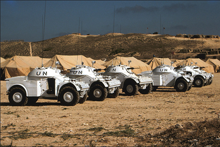
Building Trust in AI through Justice


Array
(
[thumbnail] => https://s42831.pcdn.co/wp-content/uploads/2022/09/hero-placeholder-150x150.png
[thumbnail-width] => 150
[thumbnail-height] => 150
[medium] => https://s42831.pcdn.co/wp-content/uploads/2022/09/hero-placeholder-300x129.png
[medium-width] => 300
[medium-height] => 129
[medium_large] => https://s42831.pcdn.co/wp-content/uploads/2022/09/hero-placeholder-768x329.png
[medium_large-width] => 768
[medium_large-height] => 329
[large] => https://s42831.pcdn.co/wp-content/uploads/2022/09/hero-placeholder-1024x439.png
[large-width] => 1024
[large-height] => 439
[1536x1536] => https://s42831.pcdn.co/wp-content/uploads/2022/09/hero-placeholder.png
[1536x1536-width] => 1400
[1536x1536-height] => 600
[2048x2048] => https://s42831.pcdn.co/wp-content/uploads/2022/09/hero-placeholder.png
[2048x2048-width] => 1400
[2048x2048-height] => 600
[gform-image-choice-sm] => https://s42831.pcdn.co/wp-content/uploads/2022/09/hero-placeholder.png
[gform-image-choice-sm-width] => 300
[gform-image-choice-sm-height] => 129
[gform-image-choice-md] => https://s42831.pcdn.co/wp-content/uploads/2022/09/hero-placeholder.png
[gform-image-choice-md-width] => 400
[gform-image-choice-md-height] => 171
[gform-image-choice-lg] => https://s42831.pcdn.co/wp-content/uploads/2022/09/hero-placeholder.png
[gform-image-choice-lg-width] => 600
[gform-image-choice-lg-height] => 257
)

By 2015 more than 50 percent of the world’s poor are projected to live in conflict-affected and fragile states, and by 2025 that proportion could rise to 82 percent. Aid donors and the UN development system want to effectively deliver results in fragile states, but these are complex and risky situations, where the potential for project failure and financial losses is significant. In this context, donors need to better manage the risks.
Risk management is hard enough because it’s about trade-offs and resolving operational tensions between risks and potential benefits. But put the international community together and it gets even harder. Every part of the UN and every donor has a different system. The combination of these disparate systems does not necessarily add up to effective risk management. Why? First, harmonization is difficult to achieve because varying donor objectives, incentives, definitions, and funding mechanisms place centrifugal forces on the UN system. Second, uneven quality and relevance of risk-related information available to donors and actors inhibits a coordinated effort.
There are things the UN and donors can do to improve the way risk management is done in fragile state contexts:
For a joint approach to work, a convergence of political choices among donors is key. Donors must determine their own strategic objectives, risk appetites, and the nature of the relationship that they seek with the UN.
These are general suggestions to address a very complex issue. We should remember that risk management is contextual and approaches will vary depending on circumstances. For a more in-depth look at these issues and suggestions on how to achieve smart risk management, download CIC’s white paper by Marc Jacquand and Shelley Ranii on UN Development System Risk Management in Fragile States, which was prepared for the Utstein Group’s 2014 spring meeting.
Publication Date:
Jun 27, 2014
Author(s):
Shelley Ranii,
Ashley Skiles
Topic(s):
Fragile States,
Post 2015 Development,
United Nations
Program(s):
Pathfinders for Peaceful, Just and Inclusive Societies


Subscribe to our newsletter and receive regular updates on our latest events, analysis, and resources.
"*" indicates required fields